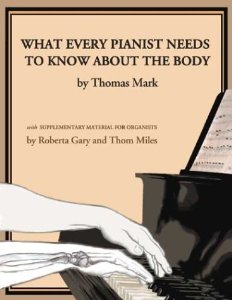A couple weeks ago I was able to attend a workshop by Dr. Carina Joly presented to the local music teachers association. In addition to receiving a DMA from the University of Oklahoma, Dr. Joly also spent time studying music physiology in Switzerland. At the workshop I attended she shared ideas about preventing injury in our own playing and in our students’ playing.
In my undergraduate studies I had two colleagues who dealt with unmanageable pain issues related to playing that have caused them to quit playing completely, so the importance of learning to prevent injury really hits home with me. Dr. Joly argued that teachers must be educated in how to prevent injury because it is our responsibility to prevent injuries in our students. I know…you’re probably thinking “one more thing I have to be responsible for as a piano teacher…I already have to make sure my students can sight-read, improvise, perform musically, know the theory behind the music, and have a deep love of music, how can I think about preventing injury too?” But, if we don’t do it, who will? Can you imagine the heartbreak of changing your life plans and career goals because playing the piano causes so much physical pain? We must become more aware of how our students use their bodies at the piano to do as much as we can to prevent this.

One great resource for pianists is the book What Every Pianist Needs to Know about the Body by Thomas Mark. Although I wouldn’t suggest you give this to your students to read (unless you teach at the collegiate level), I would suggest you read it yourself and take what you can from it to apply to your students. One of my favorite quotes from this book is “saying that we play the piano with our fingers is like saying that we run with our feet.” I love to use this in my RMM classes when we stretch at the beginning of class to explain why stretching out and relaxing our bodies is important to play the piano. The bulk of this book focuses on body mapping – becoming aware of the physical characteristics of our body and how they relate to playing the piano.
Another book I spotted at a recent convention is The Musician’s Way: A Guide to Practice, Performance, and Wellness by Gerald Klickstein. I haven’t yet read this book myself, but it seems to have less focus on physical anatomy than Mark’s book, and more of a focus on overall musicianship. It’s on my list of books I want to add to my library, so maybe I can tell you more about it in the future.
Do you have a book or other resource you reference for promoting wellness in your students? I love to hear about them!
Author: Spring
Spring Seals, NCTM, teaches 60 piano students ranging from age 3 to 70 in Fort Worth, Texas. She also serves as the Director of Certification for TMTA. She is passionate about helping teachers become more effective in their studios through professional development, new resources, and fresh ideas.
